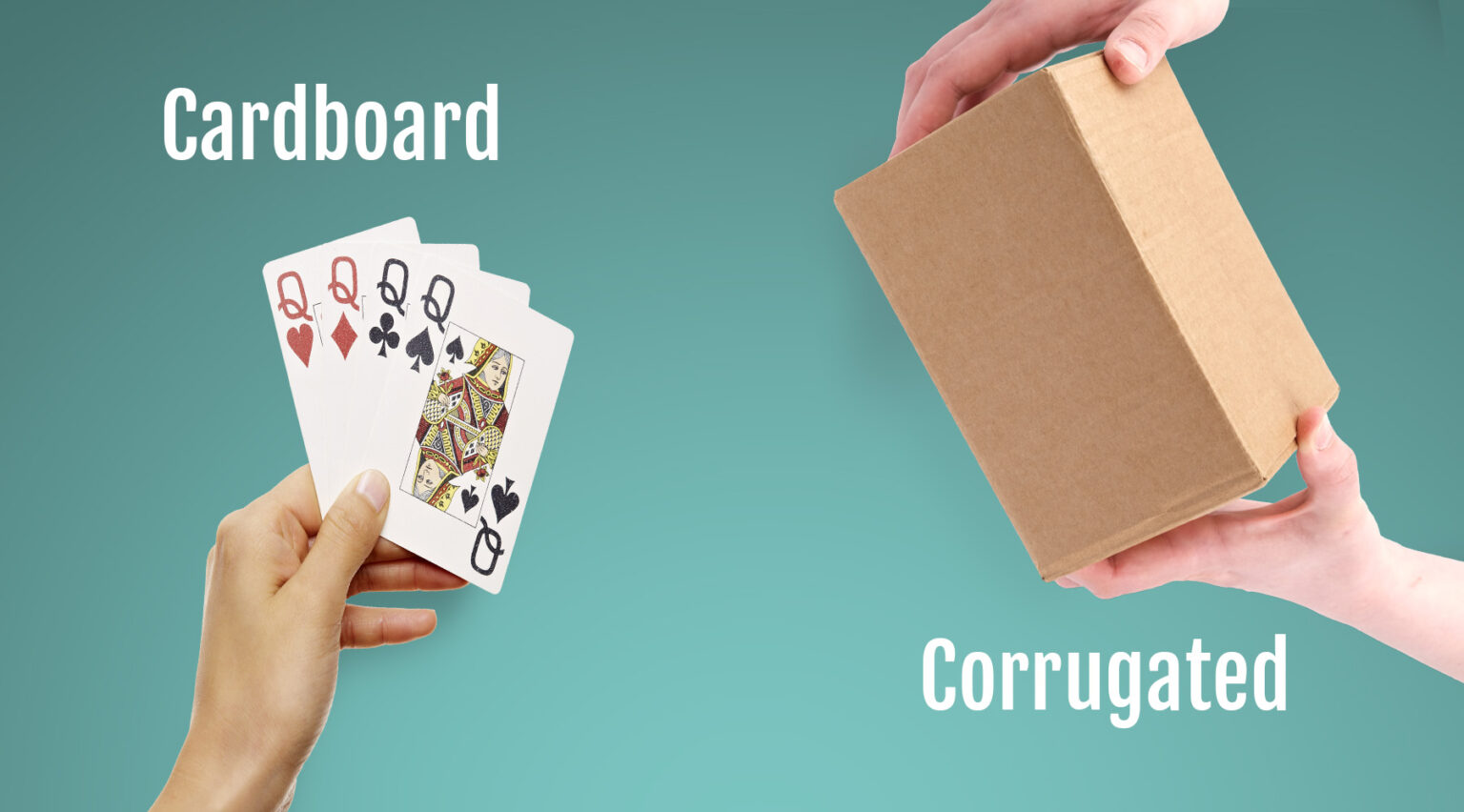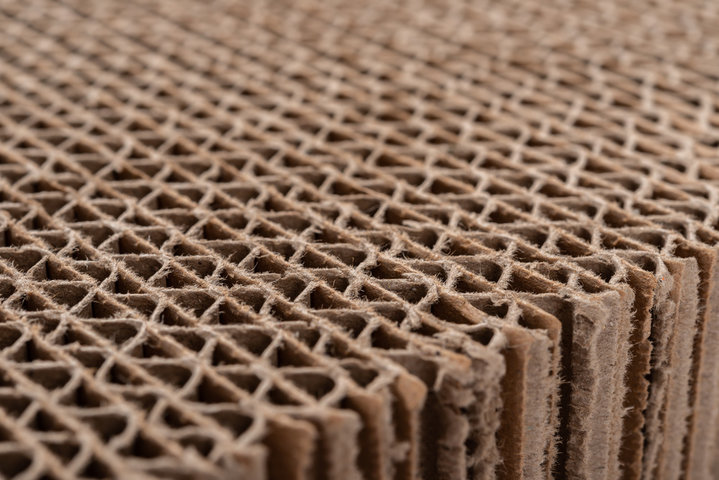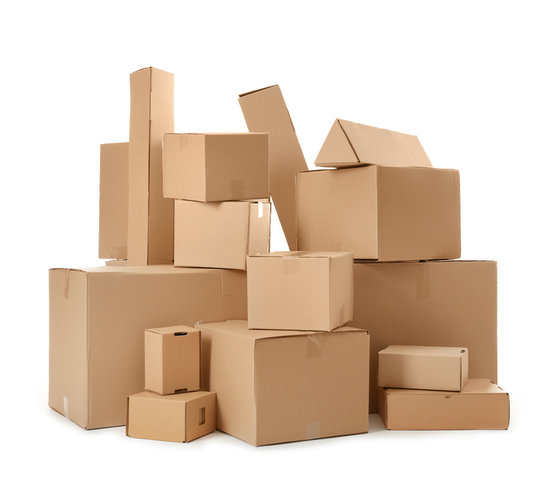
Cardboard vs. Corrugated Board—what’s the real difference? Many people use these terms interchangeably, but they are not the same. Choosing the wrong material can lead to damaged products, increased costs, and sustainability issues. Whether you're shipping fragile items or designing custom packaging, understanding these materials is essential for making the right choice.
In this post, we’ll break down the key differences between cardboard and corrugated board, explore their properties, and discuss their best applications. You’ll learn how to select the most suitable option for packaging, crafting, and storage while considering cost and environmental impact.
What is Cardboard?
Cardboard is often mistaken for any thick paper-based material, but it refers to a variety of paperboard products. Many confuse it with corrugated board, yet cardboard lacks the fluted inner layer that adds extra strength. It is primarily made from wood pulp, pressed and layered to achieve different thicknesses. Single-layer paperboard is lightweight and flexible, while thicker variations provide more durability but remain susceptible to moisture damage.
Types of Cardboard
Solid Bleached Sulfate (SBS)
SBS is crafted from chemically treated, bleached wood pulp, giving it a bright white finish. This type is widely used in high-end packaging, such as cosmetics and pharmaceuticals, where a premium appearance matters. Its smooth surface makes it perfect for detailed printing and vibrant branding.
Coated Unbleached Kraft (CUK)
Made from unbleached wood pulp, CUK retains a natural brown color. It offers greater strength than SBS but absorbs more ink, making detailed printing less sharp. CUK is a popular choice for eco-friendly packaging due to its higher durability and organic appearance.
Folding Carton Board
Common in product packaging, folding carton board is lightweight yet sturdy enough for various applications, including food and retail boxes. It balances cost-effectiveness with durability and can be easily customized through printing, embossing, or die-cutting.
Chipboard
Chipboard is produced from recycled paper pulp, making it a budget-friendly option. It lacks the structural strength of other cardboard types but is widely used for backing panels, notebook covers, and low-cost packaging. Since it is highly absorbent, it deteriorates quickly when exposed to moisture.
Properties and Characteristics
Lightweight & Easy to Handle: Cardboard is thin and flexible, making it simple to cut, fold, and shape into various forms without requiring specialized equipment. This makes it highly adaptable for packaging and crafting.
High Printability: The smooth surface of cardboard allows for sharp, colorful prints, making it ideal for branding, logos, and detailed packaging designs that require professional-quality visuals.
Low Moisture Resistance: Unless coated or laminated, cardboard easily absorbs moisture, leading to warping, softening, and a significant reduction in structural integrity when exposed to humid or wet conditions.
Recyclable & Eco-Friendly: Most types of cardboard are biodegradable and made from renewable resources, making them a sustainable choice for packaging and reducing environmental waste through recycling programs.
Common Uses of Cardboard
| Use Case | Description |
| Retail Packaging | Used in cereal boxes, electronics packaging, and toy boxes due to its lightweight yet sturdy nature. |
| Office Supplies | Essential for making file folders, presentation covers, and notebook covers, offering durability and cost-effectiveness. |
| Arts & Crafts | A staple for DIY projects, model making, and creative displays, allowing for easy cutting and customization. |
| Lightweight Storage | Used for shoe boxes, gift boxes, and temporary storage containers, offering convenience and easy handling. |

What is Corrugated Board?
Corrugated board is a multi-layered material designed for strength and durability. Unlike standard cardboard, it consists of a fluted inner layer sandwiched between two flat linerboards. The fluting acts as a shock absorber, protecting fragile items from impact damage. Linerboards add structural rigidity, preventing bending or collapsing under pressure. Different flute sizes affect cushioning, stacking strength, and overall durability, making corrugated board a versatile packaging choice.
Types of Corrugated Board
Single-Face Corrugated Board
This type consists of one liner and one fluted layer, offering minimal rigidity but excellent cushioning. It is commonly used as a protective wrap inside packaging to prevent scratches or dents. Because it remains flexible, it is ideal for wrapping delicate items like glassware and ceramics.
Single-Wall Corrugated Board
The most widely used corrugated board, featuring one layer of fluting between two liners. It strikes a balance between cost-effectiveness and strength, making it suitable for shipping boxes and retail packaging. Single-wall corrugated board is used in e-commerce, moving boxes, and general product packaging.
Double-Wall Corrugated Board
With two layers of fluting and three linerboards, double-wall corrugated board provides enhanced durability and compression resistance. This makes it ideal for packaging heavier or fragile items that require extra protection. Businesses use it for bulk shipping, industrial storage, and protecting high-value products.
Triple-Wall Corrugated Board
The strongest among all corrugated types, triple-wall corrugated board consists of three fluted layers and four liners. It offers extreme rigidity and impact resistance, often used for industrial applications. This material is commonly found in heavy-duty shipping containers for machinery, automotive parts, and large appliances.
Properties and Characteristics
Exceptional Durability & Impact Resistance: The fluted core structure absorbs shocks, preventing damage from drops, stacking pressure, or rough handling during transport.
Superior Cushioning for Delicate Products: The air pockets in the fluted layers create a natural cushioning system, reducing vibrations and impact forces for fragile items.
Better Weight Distribution Compared to Cardboard: Corrugated board evenly distributes weight, preventing warping or crushing, which makes it ideal for stacking in warehouses and transit.
More Resistant to Moisture & Environmental Damage: Coated linerboards or treated corrugated materials resist humidity, making them suitable for refrigerated packaging and long-term storage.
Common Uses of Corrugated Board
| Use Case | Description |
| Shipping & Storage Boxes | Used in e-commerce, logistics, and retail for secure transport of products. |
| Protective Packaging | Provides impact resistance for fragile goods like electronics and glassware. |
| Temporary Furniture & Displays | Utilized in trade shows, pop-up stores, and eco-friendly furniture solutions. |
| Heavy-Duty Containers | Designed for industrial storage, machinery transport, and high-weight packaging. |
Key Differences Between Cardboard and Corrugated Board
Structural Differences
Cardboard is a single-layer material, which makes it simple, flexible, and easy to handle. It’s perfect for lightweight packaging or craft projects where ease of manipulation is needed. On the other hand, corrugated board has a multi-layer structure, consisting of two flat liners and a fluted middle layer. This additional layer increases its strength, making it ideal for heavy-duty applications like shipping and packaging fragile items.
The fluted middle layer in corrugated board significantly enhances its durability. It acts as a cushion, absorbing shocks and protecting items from external pressure. This extra layer is what sets corrugated board apart in terms of strength and protective qualities.
Weight and Thickness Comparison
Cardboard is thinner and lighter than corrugated board. This gives it more flexibility, making it easier to cut, fold, or shape. However, because it’s thinner, it doesn't provide the same level of protection against crushing or tearing.
Corrugated board, on the other hand, can vary in thickness depending on the flute size and the number of layers. The larger the flutes and the more layers present, the thicker and stronger the board becomes. This added thickness makes it more resistant to impact and compression, ideal for heavier items.
Durability and Strength
Corrugated board is far more durable than cardboard due to its layered structure. Its resistance to crushing and tearing makes it the go-to choice for protective packaging, particularly for fragile or valuable items. The multi-layer construction ensures that corrugated board can withstand external pressures better than cardboard.
Cardboard, being thinner and more flexible, is more prone to bending or tearing under stress. While it’s suitable for light applications, it doesn’t hold up well when subjected to heavy pressure or rough handling.
Flexibility and Versatility
Cardboard is much easier to manipulate than corrugated board, making it ideal for creative projects. Its lightweight nature allows for easy cutting, folding, and shaping, which is why it's often used in arts and crafts, DIY tasks, and product displays.
In contrast, corrugated board is less flexible but offers more durability. It is highly effective for protective packaging where rigidity and strength are required. Its structure helps it absorb shocks and protect fragile items during shipping, making it the preferred choice for packaging.
Cost Comparison
Cardboard is generally less expensive to produce and purchase. Its simpler design and lighter weight make it an affordable option for a wide range of uses, such as packaging and crafting. It’s the cost-effective choice when durability isn’t a major concern.
Corrugated board, while typically more expensive, offers better long-term value for shipping and storage. Its durability makes it a more reliable option for protecting goods during transit, which can help reduce costs related to damage or product replacements over time.

Pros and Cons of Cardboard vs. Corrugated Board
Advantages and Disadvantages of Cardboard
Strengths
Lightweight
Cardboard is very light, making it easier to handle, store, and transport, especially for smaller packaging and everyday products that don't require heavy-duty protection.
Cost-effective
Due to its simpler design and production process, cardboard is inexpensive to produce in bulk, making it an ideal option for businesses looking to minimize packaging costs without sacrificing quality.
Good for Printing
The smooth surface of cardboard is perfect for high-quality printing. It's commonly used for product packaging where branding, logos, and graphics are essential for attracting customers and enhancing visibility.
Weaknesses
Less Durable
Cardboard is not as durable as corrugated board, making it more prone to bending, tearing, and damage, especially when exposed to moisture or heavy impacts during handling.
Damage from Moisture
Cardboard is highly susceptible to water damage. When exposed to humidity or moisture, it can lose its structure, weaken, and even fall apart, which limits its usefulness for outdoor or heavy-duty applications.
Limited Weight Support
Because cardboard is thinner and lighter, it can’t bear heavy loads without collapsing or getting damaged. It’s better suited for lightweight products or packaging that doesn't require significant strength.
Advantages and Disadvantages of Corrugated Board
Strengths
Strong yet Light
Corrugated board offers a great combination of strength and lightness, making it ideal for protecting heavy or fragile items while still being easy to handle and transport without added bulk.
Protects Fragile Items
Thanks to its multi-layer construction and fluted structure, corrugated board provides excellent cushioning and shock absorption, which helps protect delicate or easily breakable products during shipping or storage.
Eco-friendly
Corrugated board is highly recyclable and can be reused multiple times. This makes it a more environmentally sustainable choice compared to other packaging materials, reducing waste and supporting recycling efforts.
Weaknesses
Bulkier
Due to its multi-layer construction, corrugated board is bulkier and less flexible than cardboard. This makes it harder to cut, shape, and store efficiently, particularly for projects that require precise fitting.
Higher Costs
Producing corrugated board is more expensive than cardboard due to its more complex structure. Additionally, its bulkier nature increases shipping costs, especially for larger quantities or international shipments.
Needs Coatings
For certain applications, corrugated board may need additional coatings or treatments, such as moisture protection or a smoother surface for printing, which can add to production costs and time.
Choosing Between Cardboard and Corrugated Board
Best Applications for Each Material
| Application | Cardboard | Corrugated Board |
| Packaging | Ideal for lightweight items, like books and clothing | Best for fragile or heavy items needing extra protection |
| Crafts and DIY Projects | Excellent for crafts due to its ease of cutting | Less suitable due to bulkiness and rigidity |
| Office Supplies | Great for file folders and lightweight storage | Less commonly used for office supplies due to cost and bulk |
| Shipping | Suitable for small, non-fragile items | Preferred for shipping fragile or bulky items |
| Storage | Good for short-term storage of non-sensitive items | Best for long-term storage, especially for fragile goods |
Industry-Specific Recommendations
E-Commerce and Retail Packaging
E-commerce businesses must carefully choose their packaging material, as it affects both shipping costs and product safety. Cardboard is a cost-effective choice for smaller, non-fragile items due to its light weight. However, if the product is more delicate, corrugated board provides superior protection, despite its higher cost. The choice also impacts brand perception—premium brands often opt for corrugated board to ensure that their products are well-protected and visually appealing to customers.
Food and Beverage Industry
In the food industry, packaging needs to maintain product integrity. Both cardboard and corrugated board can be treated with food-grade coatings and moisture-resistant options, ensuring that food remains fresh during storage and transit. Additionally, sustainability is a major concern. Corrugated board, being recyclable and reusable, aligns well with eco-friendly practices in food packaging, while cardboard can also be an environmentally-conscious choice, depending on its treatment.
Moving and Storage Solutions
For moving and storage, corrugated board is the go-to material. It offers strength and durability, able to support heavier items and withstand the rigors of transport. The multi-layer structure ensures that items are well-cushioned and protected from damage. While cardboard may suffice for lighter, less valuable items, it’s not ideal for stacking or handling heavy loads. Corrugated board provides better weight distribution and support during long-term storage or moves.
Factors to Consider Before Making a Decision
Weight Limits and Stacking Strength
Corrugated board supports heavier items and better withstands stacking pressure, while cardboard may collapse under heavy loads.
Environmental Concerns and Sustainability Goals
Corrugated board is more eco-friendly due to its recyclability, while cardboard can also be recycled but may have limitations depending on coatings.
Cost-Effectiveness Based on Intended Use
Cardboard is cheaper for light, short-term packaging. However, corrugated board offers better protection, making it worthwhile for shipping fragile goods despite the higher cost.
Conclusion
Understanding the differences between cardboard and corrugated board is crucial when selecting materials for various applications. Cardboard is lighter and more flexible, making it ideal for packaging and creative projects, while corrugated board is stronger, offering better protection for shipping and storage. Consider the specific needs of your project before choosing.
Ultimately, the decision should factor in durability, cost, and sustainability. Opt for corrugated board for heavier and fragile items, while cardboard is perfect for lightweight packaging. Choosing wisely helps reduce long-term costs and supports eco-friendly practices, making your packaging choices both practical and sustainable.
FAQs About Cardboard and Corrugated Board
How Can I Tell the Difference Between Cardboard and Corrugated Board?
Cardboard is flat and smooth, while corrugated board has a wavy layer between two flat surfaces, making it thicker and more rigid.
Which is Better for Shipping Fragile Items?
Corrugated board is better for fragile items due to its layered structure, which absorbs shocks and provides superior protection during transit.
Are There Waterproof Versions of These Materials?
Yes, both materials can be coated with wax or laminated to make them moisture-resistant, ideal for packaging exposed to wet conditions.

























